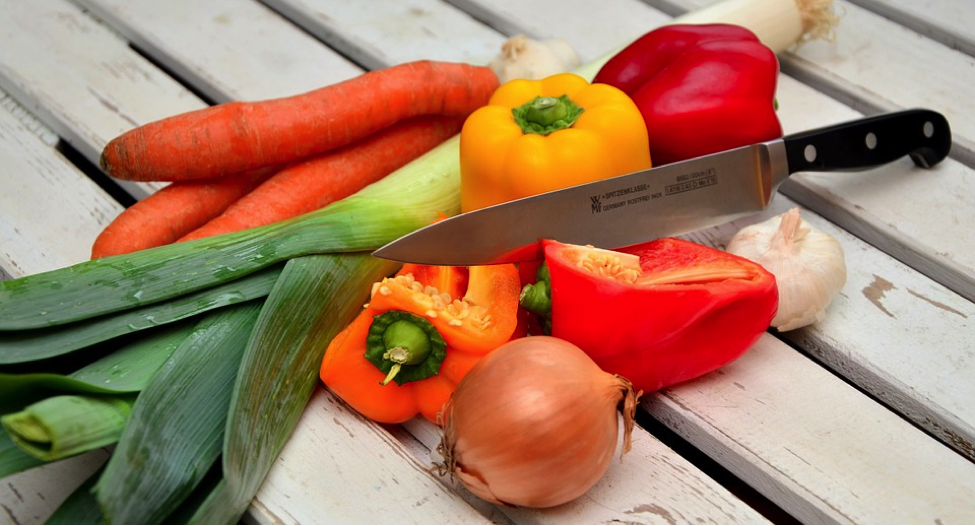
by Zyana Morris
Getting your children to eat vegetables is a battle every parent has to go through at some point. The moment the kids spot leafy greens on their plate, most parents expect to hear “eww”, “gross” and “I don’t want to eat this”.
Over the years, parents have attempted many ways to try and get their kids to eat their greens. These techniques consist of: trying to distract the kids with conversation, bribing them with candy or a toy, begging and of course, force-feeding them – that’s always fun isn’t it?
While some of these techniques may work, they are quite a bit of a hassle; they don’t teach your kids how to appreciate vegetables and actively seek them out. Alright, maybe seeking them out is too much of a stretch but the point is that these ways do not help in the long-run.
You need to help your children to let go of their initial vegetable fears, look past the bitterness, keep the benefits in minds and eat their veggies happily. That way they do not avoid them in the future and will grow up on a balanced diet.
Don’t panic, it initially may be difficult but it isn’t impossible for your children to eat their veggies.
Here are a few ways you can get your kids to eat their veggies:
1) Butter Them
Everything’s better with butter, even vegetables. Buttering veggies is the easiest way to get your kids to not hate them.
Some vegetables that are loaded with essential nutrients are the ones children hate the most. Vegetables like broccoli and kale are veggies that seem to be universally hated by all children for one simple reason – the bitterness.
According to experts, in the wild, bitterness signifies toxicity and children’s tongues specifically are very sensitive to it. As adults, we’ve grown accustomed to the taste and have learned to associate the strong bitterness with nutrition.
Children are much more resistant to bitterness which is why adding a spoonful of butter to their veggies makes that much of a difference.
Grass-fed butter particularly is very healthy as it contains Vitamin, A, E, and D3; all of which are essential for the growth of your child. Additionally, butter contains fats which allow the vitamins from the vegetables to be absorbed more easily by children’s bodies.
2) Get Them When They’re Hungry
There are times of the day where your children are feeling more famished. Upon returning home after a long day at school, children usually want something to eat and this is where you bring in your plate of veggies. This is your moment to give your kids a healthy snack.
A plate of leafy greens may not be the answer but you can bring them veggies that they don’t entirely hate such as carrots, cucumbers, celery and bell peppers.
Young children only need about a cup and half of vegetables every day – a plateful after school will do the trick.
3) The Dip Trick
Children love sauces but they also love dips. Studies reveal that children are more likely to eat veggies when they are served with a tasty dip.
Everyone has their preferences but when it comes to kids, ranch dressing is usually the way to go.
However, serving your kids ranch dressing you’ve bought at the store isn’t the healthiest. They are loaded with preservatives and have a high content of soybean oil which isn’t the best for children. You’d be much better off preparing your own dressing at home.
4) Put Them in Front of the TV
When you’re an adult, eating in front of the TV isn’t the best idea because your brain isn’t registering the food and you end up over-eating. With kids, you control the portions.
Make them a healthy plate of food and put on something they enjoy watching. The TV should distract them from whatever it is that they are eating.
Kids aren’t the best at concentrating on 2 different things at once; they are probably going to be focused on the screen and will eat the veggies without realizing it.
5) Be a Role Model
This works better when children are younger. Children at the age of 4-6yrs old tend to copy the behavior of adults around them. If you are eating vegetables in front of them, they are much more likely to give them a taste.
6) Grow a Garden
If you have the space in your yard then try and grow a few vegetables with the help of your children. Keep them involved in the process by getting you to help them plant seeds.
Growing their own garden excites children. When the vegetables grow, harvest them and cook them – again with your children. They need to learn to associate vegetables with something other than the strong, bitter taste.
7) Make a Smoothie
Even for most adults, gulping a smoothie is easier than trying to eat a large plate of vegetables. Certain smoothie recipes disguise the ingredients so well, you’re children will never know that they just consumed kale.
Scour the internet for the most delicious and nutritious smoothie recipes and make them for your kids.
(Zyana Morris is a passionate health and lifestyle blogger who loves to write about prevailing trends. She is a featured author at various authoritative blogs including LifeHack.org, Feedster.com, MedicalFitnessNetwork.org, FamilyShare.com & much more. Currently, she is associated as a blogger with Hourglass Express, providers of quality waist trainers and weight loss products. You can find her using Facebook and Twitter.)






It is always better to start them off on vegetables when they are too young to refuse. Of course, you have to make the food palatable by not including anything bitter. Once they get used to the taste of vegetables and fruits, they are more likely to not refuse when they become older.